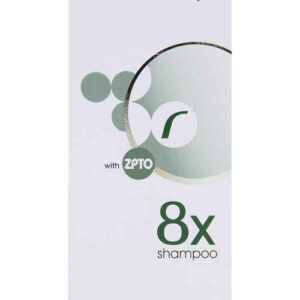CICLOPIROX OLAMINE + ZINC PYRITHIONE
Ciclopirox Olamine: Ciclopirox olamine is an antifungal medication that is used to treat fungal infections of the skin, such as athlete’s foot, jock itch, and ringworm. It comes in the form of a cream or lotion.
The mechanism of action of Ciclopirox olamine involves inhibiting the synthesis of ergosterol, a key component of fungal cell membranes. This disruption leads to the destruction of the fungal cell and inhibits its growth.
The recommended dose and duration of treatment may vary depending on the specific infection being treated. Generally, Ciclopirox olamine should be applied to the affected area twice daily for 2 to 4 weeks. It is important to follow the instructions provided by your healthcare professional.
Some common side effects of Ciclopirox olamine include skin stinging, burning, redness, and itching at the application site. These side effects are typically mild and temporary. However, if you experience severe or persistent side effects, it is advisable to consult your doctor. In rare cases, allergic reactions may occur, characterized by hives, rash, swelling, or difficulty breathing. If any of these symptoms occur, seek immediate medical attention.
It is worth noting that Ciclopirox olamine may interact with other medications or skin products, so it is important to inform your healthcare professional about any other treatments you are using. Additionally, it is always recommended to discuss any concerns or questions with your doctor or pharmacist before starting any medication.
Zinc Pyrithione: Zinc pyrithione is a medication primarily used for the treatment of dandruff and seborrheic dermatitis. It is classified as an antifungal and antibacterial agent, commonly found in various shampoos and topical creams.
The exact mechanism of action of zinc pyrithione is not fully understood. However, it is believed to work by inhibiting the growth of fungi and bacteria on the skin, thus reducing inflammation, redness, and scaling associated with dandruff and seborrheic dermatitis.
The drug is typically applied topically to the affected area, usually in the form of a shampoo or cream. For dandruff treatment, it is commonly used as a shampoo, applied to the scalp and left for a few minutes before rinsing. The frequency of use may vary depending on the severity of the condition and individual response, but it is often used 2-3 times a week initially, and less frequently as symptoms improve.
Zinc pyrithione is generally considered safe for most individuals when used as directed. However, like any medication, it can have potential side effects. These can include skin irritation, itching, redness, and dryness at the application site. In rare cases, an allergic reaction may occur, characterized by hives, rash, or difficulty breathing. If any of these side effects occur, it is advisable to discontinue use and seek medical attention.
Additionally, zinc pyrithione can temporarily discolor hair or cause a slight change in hair color, particularly in individuals with light or blonde hair. This effect is generally reversible and fades with time.
It is important to follow the instructions provided by the healthcare professional or the product label when using zinc pyrithione. If there are any concerns or questions, it is advisable to consult a healthcare provider for further guidance.

